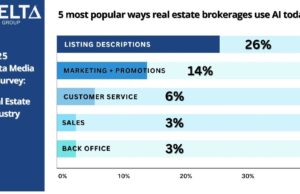More Than 70 National Affordable Housing Organizations Call on President Trump to Expand Federal Investments That Will Promote Economic Mobility
Washington DC – (RealEstateRama) — The infrastructure proposal unveiled by President Donald Trump yesterday in his State of the Union Address misses an opportunity to address one of greatest barriers to America’s economic growth: the lack of affordable rental homes for people with the lowest incomes. The Campaign for Housing and Community Development Funding (CHCDF)– a coalition of more than 70 national organizations – urges the President and Congress to seize this moment by expanding federal investments in communities and affordable rental homes that help connect low income families to opportunity and promote economic mobility.

CHCDF’s report, A Place to Call Home, found that increasing the supply of affordable rental homes in areas connected to good schools, well-paying jobs, healthcare, and transportation helps families climb the economic ladder and leads to greater community development. Investing in affordable housing infrastructure – including resources targeted to production, preservation, and rental assistance – bolsters productivity and economic growth, supports local job creation and increased incomes, and creates inclusive communities. Each dollar invested in affordable housing infrastructure boosts local economies by leveraging public and private resources to generate income and supports job creation and retention. Without access to affordable rental homes, the investments in transportation and infrastructure included in the President’s proposal will fall short.
Today, there is a national shortage affordable rental homes for low income people, including seniors, people with disabilities, families with children, and other populations. The National Low Income Housing Coalition (NLIHC) reports that there are just 35 affordable and available rental homes for every 100 households with extremely low incomes. As a result, 71% of these households pay more than half of their income on rent, leaving few resources to cover other basic needs, including food, healthcare, childcare, education, and retirement savings. In addition, on any given night, more than 500,000 people are experiencing homelessness.
“The connection between affordable rental homes and infrastructure is clear: like roads and bridges, affordable homes are a long-term asset that helps communities and the lowest income families thrive. Targeted rental housing investments should be included in any infrastructure package,” stated Diane Yentel, president and CEO of NLIHC.
“Housing is fundamental to our national infrastructure and must be part of any infrastructure plan. Opportunity for Americans begins with affordable, well-designed homes in thriving communities – a must to promote equitable outcomes for working families and reach our full potential as a nation,” said Terri Ludwig, president and CEO of Enterprise Community Partners, Inc.
“Affordable housing investment is an essential piece of our country’s infrastructure strategy. When communities don’t have adequate affordable housing for their workforce, families suffer. Investment in affordable housing improves economic growth, promotes economic mobility and supports job creation and increased incomes. Any infrastructure package needs to include a robust affordable housing component to allow for increased economic impact,” stated Laura DeMaria, executive director of the National Association for County Community and Economic Development.
“Our communities are woven together by the homes within them. Any infrastructure plan would be incomplete without funding to expand the supply of homes affordable to low-income people, including the millions of older adults forced to choose today between paying for medicine, rent, and food because of the lack of affordable homes,” stated Katie Smith Sloan, president and CEO, LeadingAge.
“The philanthropic community is and will continue to engage with public partners to invest in safe, accessible, and affordable housing in communities around the country. Philanthropy recognizes and understands the critical need to invest in affordable housing infrastructure, but cannot fill this need alone. In order to move individuals and families out of homelessness and into housing, it is imperative that robust public funds are available for private dollars to leverage,” said Amanda Andere, CEO of Funders Together to End Homelessness.
“Any national infrastructure plan should include an investment in preserving and improving safe, affordable housing, which is fundamental to helping families thrive and access opportunity,” said Ellen Lurie Hoffman, federal policy director of the National Housing Trust. “A federal commitment to affordable housing is essential to leverage private investment, ensuring that Americans can access rental housing that is affordable and sustainable over time.”
###
The Campaign for Housing and Community Development Funding (CHCDF) is an education, strategy and action hub led by NLIHC. The coalition of more than 70 national organizations works to ensure the highest allocation of resources possible to support affordable housing and community development. CHCDF’s members represent a full continuum of national housing and community development organizations, including faith-based, private sector, financial/intermediary, public sector and advocacy groups.
PRESS CONTACT
Renee Willis
Vice President for Field & Communications
(202) 662-1530 x247

















